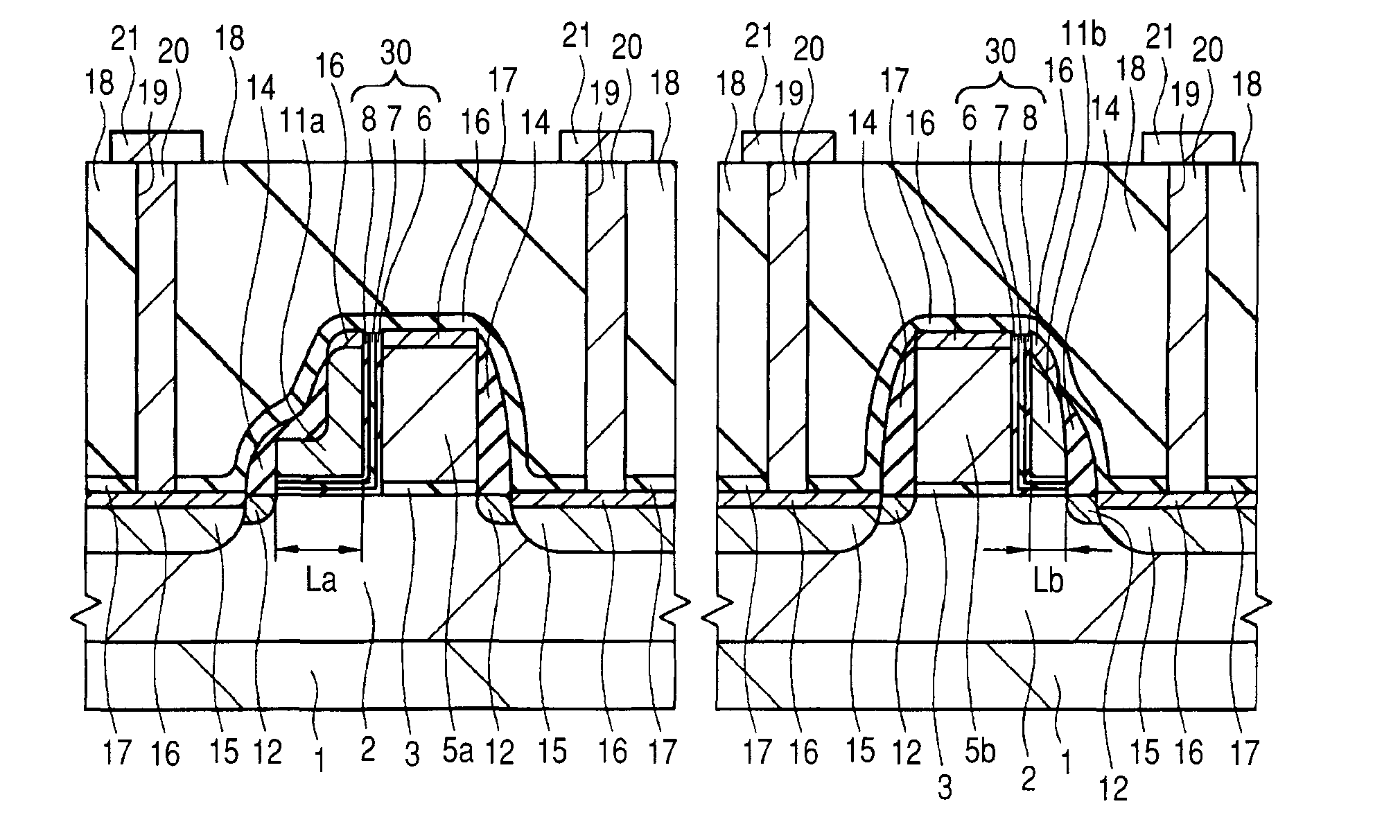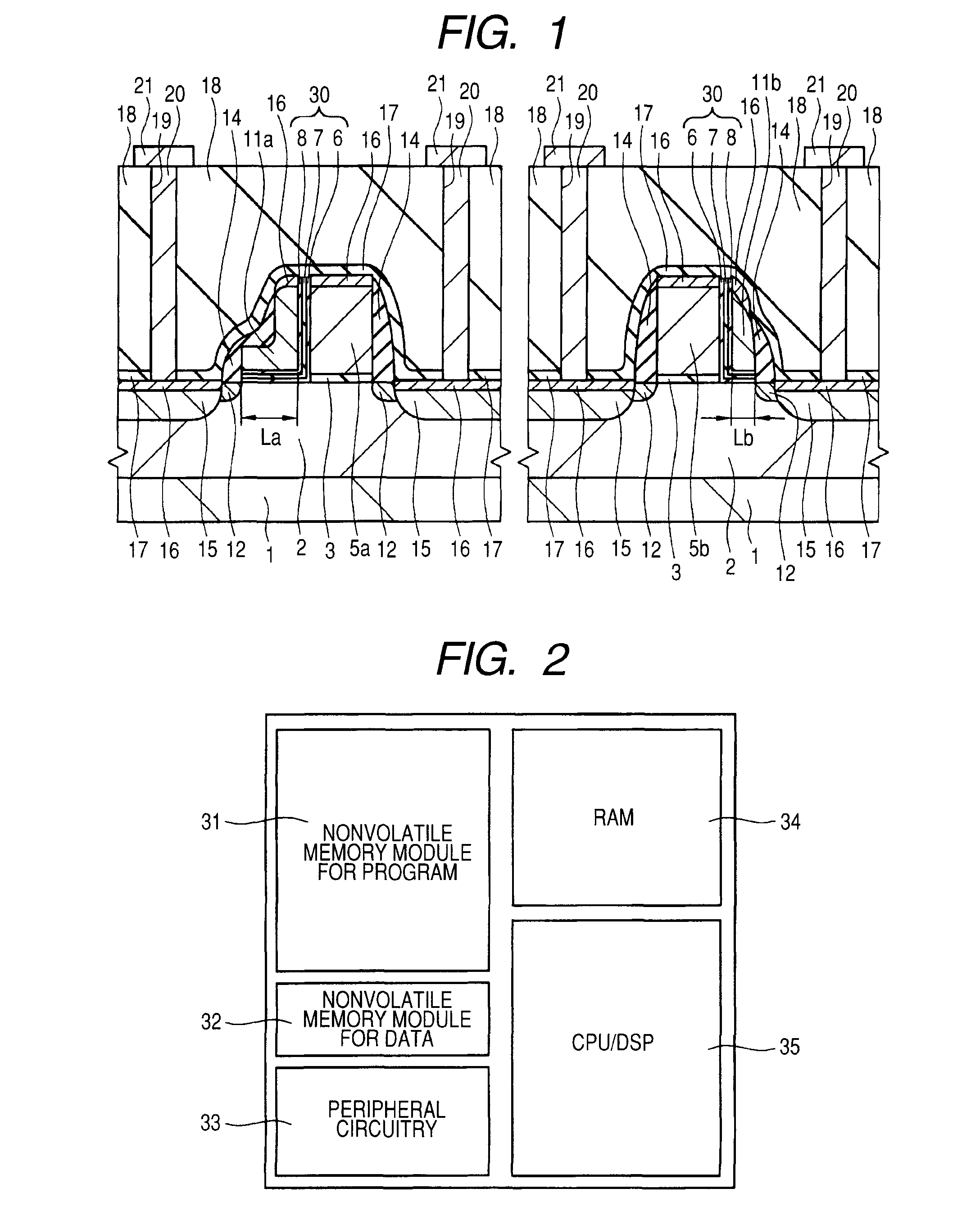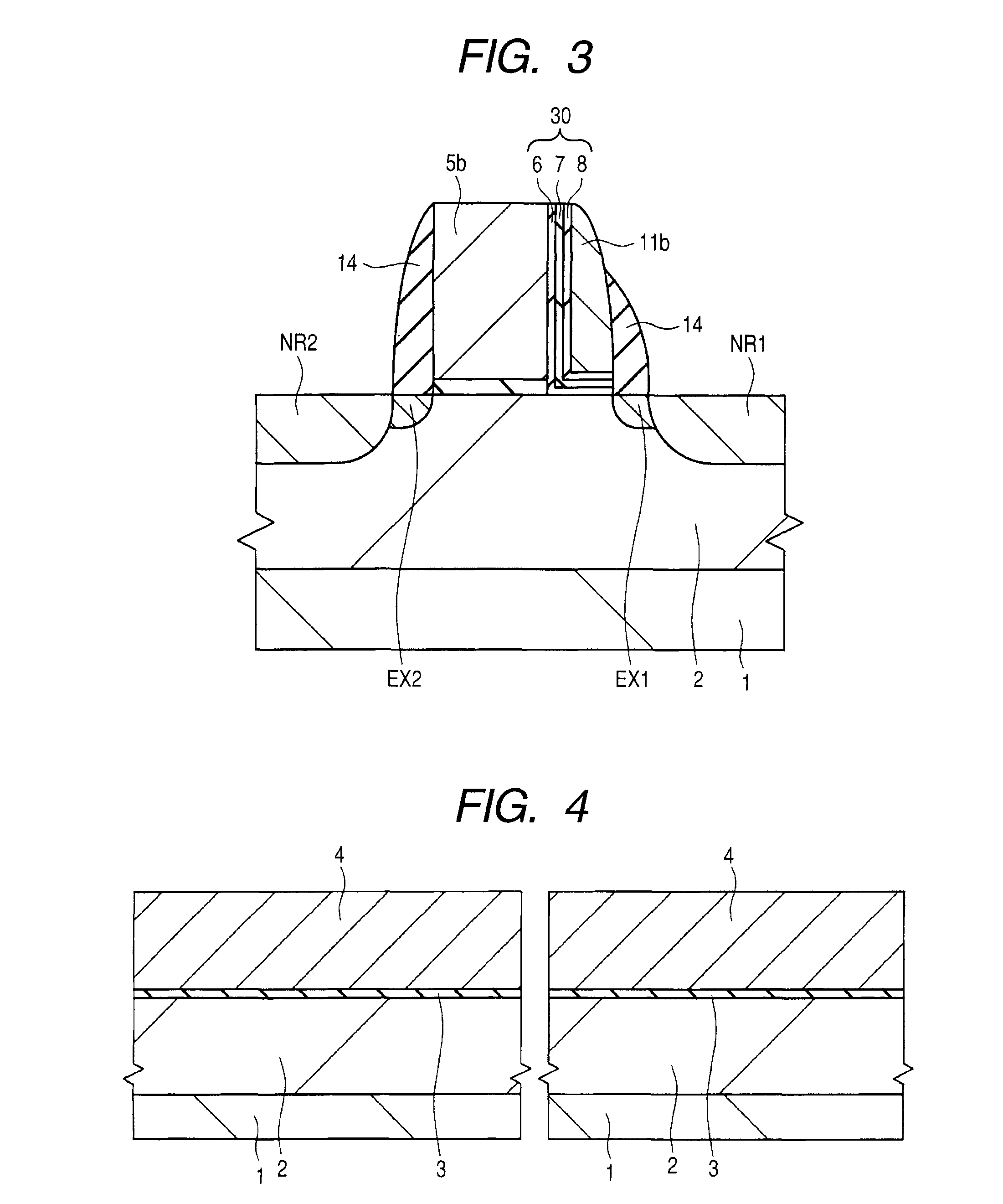Semiconductor device and production method thereof
a technology of semiconductors and production methods, applied in the direction of semiconductor devices, electrical devices, transistors, etc., can solve the problems of prolonged development period and undesired production cost increase, and achieve high operation speed, high rewrite cycle, and high reliability
- Summary
- Abstract
- Description
- Claims
- Application Information
AI Technical Summary
Benefits of technology
Problems solved by technology
Method used
Image
Examples
embodiment 1
[0056]FIG. 1 is a sectional view showing a substantial part in a memory alley region of a semiconductor device according to Embodiment 1 of the present invention. FIG. 2 is a plan view showing the layout of the semiconductor device according to Embodiment 1 of the present invention and the microcomputer is equipped with a nonvolatile memory module 31 for programs, a nonvolatile memory module 32 for data, a peripheral circuit 33, a RAM (Random Access Memory) 34, and a CPU (Central Processing Unit) / DSP (Digital Signal Processor) 35.
[0057]The semiconductor device according to the present embodiment includes a nonvolatile semiconductor memory device having split gate type memory cells of a MONOS type. The split gate type memory cells of the present embodiment comprise control MIS transistors and memory MIS transistors which are formed over a p-type well 2 in a p-type silicon substrate 1, as shown in FIG. 1. Gate electrodes of the control MIS transistors (control gate electrodes 5a and 5...
embodiment 2
[0086]A method for producing nonvolatile memories according to the present embodiment is hereunder explained in the order of the process steps in reference to FIGS. 15 to 21.
[0087]Firstly, as shown in FIG. 15, in the same way as Embodiment 1, a gate insulation film 3 and control gate electrodes 5a and 5b are formed respectively over the main face of a silicon substrate 1 having a p-type well 2. Thereafter an ONO film 30, a polycrystalline silicon film 9, and a silicon oxide film 10 are deposited sequentially over the main face of the silicon substrate 1 and parts of the silicon oxide film 10 are removed by dry etching in which a photolithography technology is used so that the silicon oxide film 10 may remain over the polycrystalline silicon film 9 formed over the sidewalls of the control gate electrode 5a. That is, the silicon oxide film 10 over the polycrystalline silicon film 9 formed over the sidewalls of the control gate electrode 5b is removed. Thereafter, the remaining silicon...
embodiment 3
[0100]A method for producing nonvolatile memories according to the present embodiment is hereunder explained in the order of the process steps in reference to FIGS. 22 to 26.
[0101]Firstly, as shown in FIG. 22, in the same way as Embodiment 1, a gate insulation film 3 and control gate electrodes 5a and 5b are formed respectively over the main face of a silicon substrate 1 having a p-type well 2. Thereafter an ONO film 30 and a polycrystalline silicon film 9 are deposited sequentially over the main face of the silicon substrate 1.
[0102]Successively, as shown in FIG. 23, a photoresist film 22 is formed over the main face of the silicon substrate 1 and, on this occasion, the photoresist film 22 is formed so that only the vicinity of the sidewall on one side of the control gate electrode 5a may be covered with the photoresist film 22.
[0103]Successively, as shown in FIG. 24, parts of the polycrystalline silicon film 9 are removed by dry etching. On this occasion, over the sidewall of the ...
PUM
 Login to View More
Login to View More Abstract
Description
Claims
Application Information
 Login to View More
Login to View More - R&D
- Intellectual Property
- Life Sciences
- Materials
- Tech Scout
- Unparalleled Data Quality
- Higher Quality Content
- 60% Fewer Hallucinations
Browse by: Latest US Patents, China's latest patents, Technical Efficacy Thesaurus, Application Domain, Technology Topic, Popular Technical Reports.
© 2025 PatSnap. All rights reserved.Legal|Privacy policy|Modern Slavery Act Transparency Statement|Sitemap|About US| Contact US: help@patsnap.com



